Key takeaways
- Props in portrait photography should complement the subject’s personality and enhance authenticity without overpowering the image.
- Choosing the right props involves understanding the subject deeply and ensuring that each item tells a meaningful story.
- Visual balance is crucial; pay attention to the size, placement, and lighting of props to create harmony in the composition.
- Encourage natural interaction with props to help subjects feel comfortable, leading to more genuine expressions and connections in portraits.
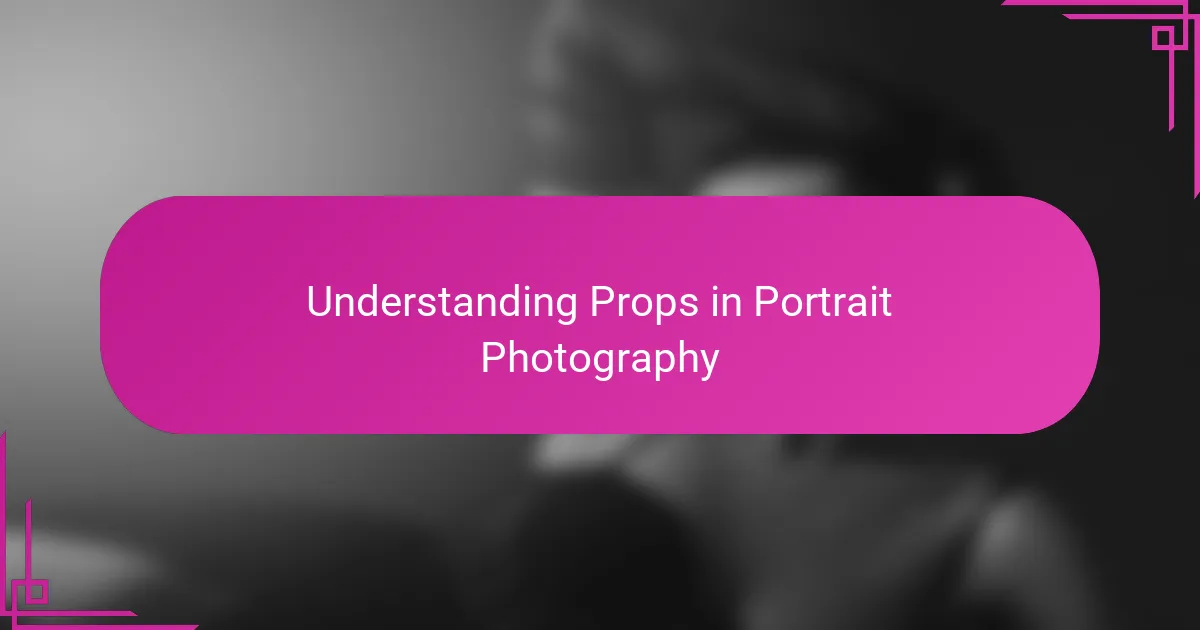
Understanding Props in Portrait Photography
Props in portrait photography aren’t just objects; they tell a story. When I first started, I used props almost randomly, thinking any item could add interest. But over time, I realized that every prop should complement the subject’s personality or the mood I want to evoke.
Have you ever paused to consider why certain props make a portrait feel authentic while others feel forced? I’ve found that subtlety often wins — a simple chair, a favorite book, or a meaningful accessory can reveal more about someone than an elaborate setup. It’s about enhancing the connection between the viewer and the subject without distraction.
From my experience, understanding props means knowing when to use them and when to let the subject shine alone. Sometimes, less is more, and the absence of props can make a portrait even more powerful. The balance lies in being intentional: each prop should add depth, not clutter.
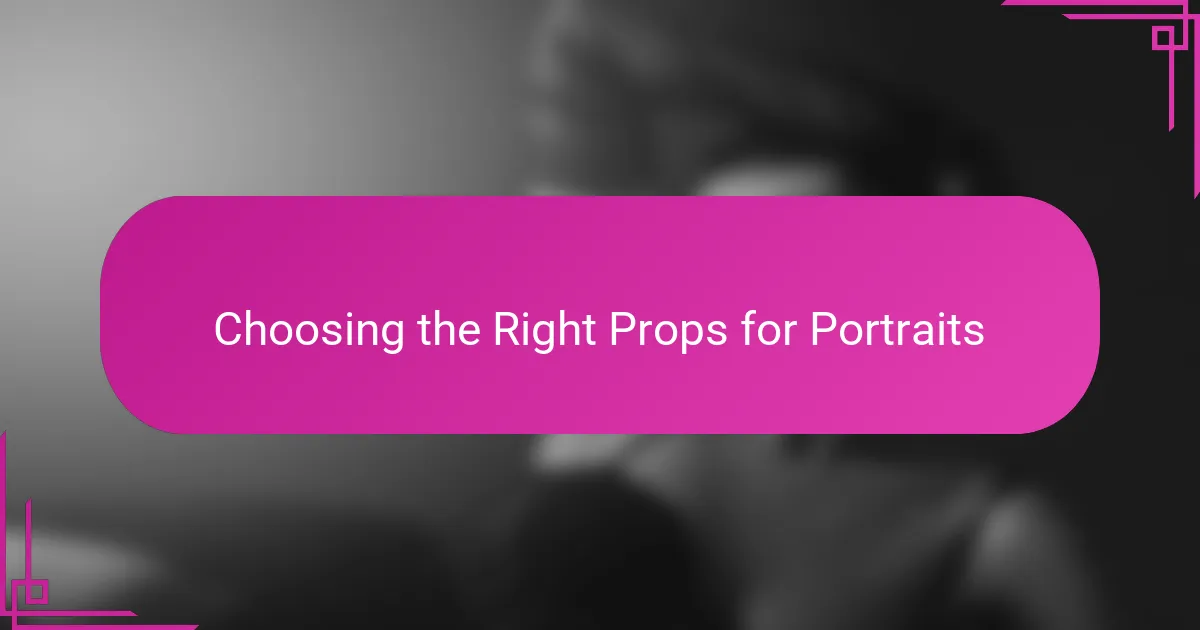
Choosing the Right Props for Portraits
Choosing the right props starts with really knowing your subject. I remember working with a musician who brought her guitar, and instantly, the whole vibe of the shoot changed. It wasn’t just about the instrument; it revealed her passion and gave her something to connect with, making the portraits feel genuine.
Sometimes, I ask myself, “Does this prop tell a story or just fill space?” Early on, I made the mistake of adding flashy items that distracted rather than enhanced. Now, I focus on props that reflect a person’s character or hint at their life, like a well-worn hat or a cherished family heirloom.
It’s also important to keep the environment in mind. I once used a large, ornate chair in a minimalist studio and realized it overwhelmed the frame. Choosing props that harmonize with the setting ensures they support the portrait without stealing the spotlight. Have you noticed how simplicity often lets the subject’s true essence shine through?
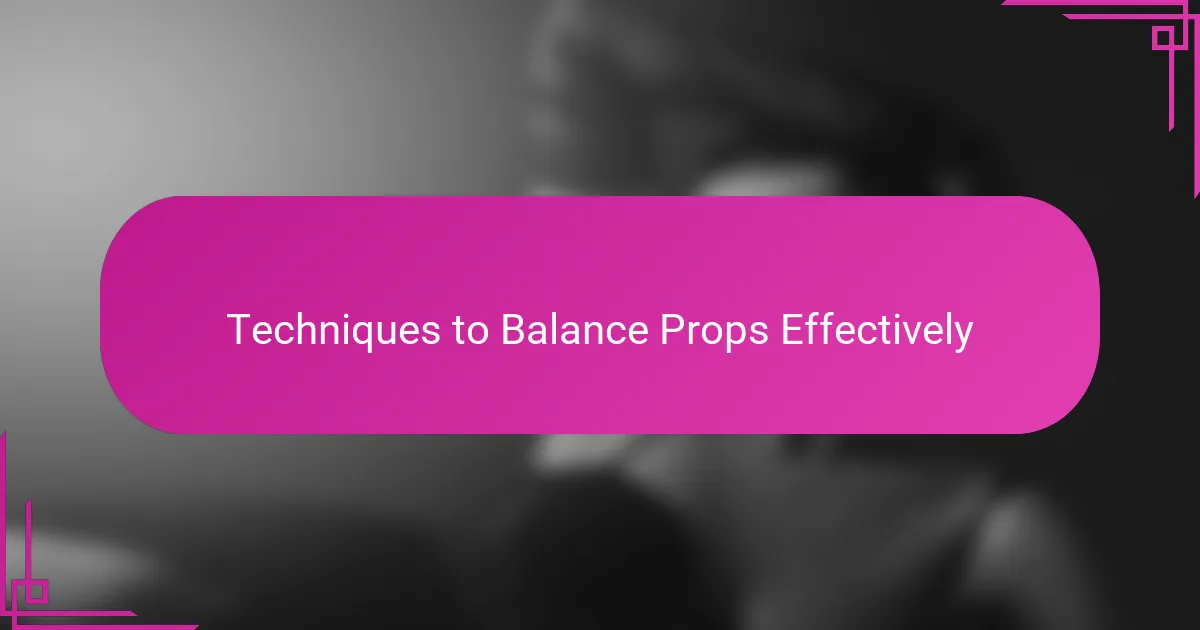
Techniques to Balance Props Effectively
Balancing props effectively is all about visual harmony. I recall a shoot where I placed a vintage camera on a table next to my subject, but it crowded the frame and pulled attention away from her face. Adjusting its position slightly and pairing it with softer background elements helped create a natural flow that felt balanced.
One trick I’ve learned is to observe the weight and size of each prop in relation to the subject. Have you ever noticed how a bulky item can dominate a portrait if you’re not careful? I now consciously arrange props to counterbalance each other, making sure none overshadow the person being photographed.
Lighting also plays a crucial role in balancing props. I once used a delicate necklace that barely caught the light, so I repositioned my subject to highlight the subtle sparkle. That small adjustment ensured the prop enhanced the story rather than becoming a forgotten detail. Have you tried shifting light angles to give props their deserved moment?
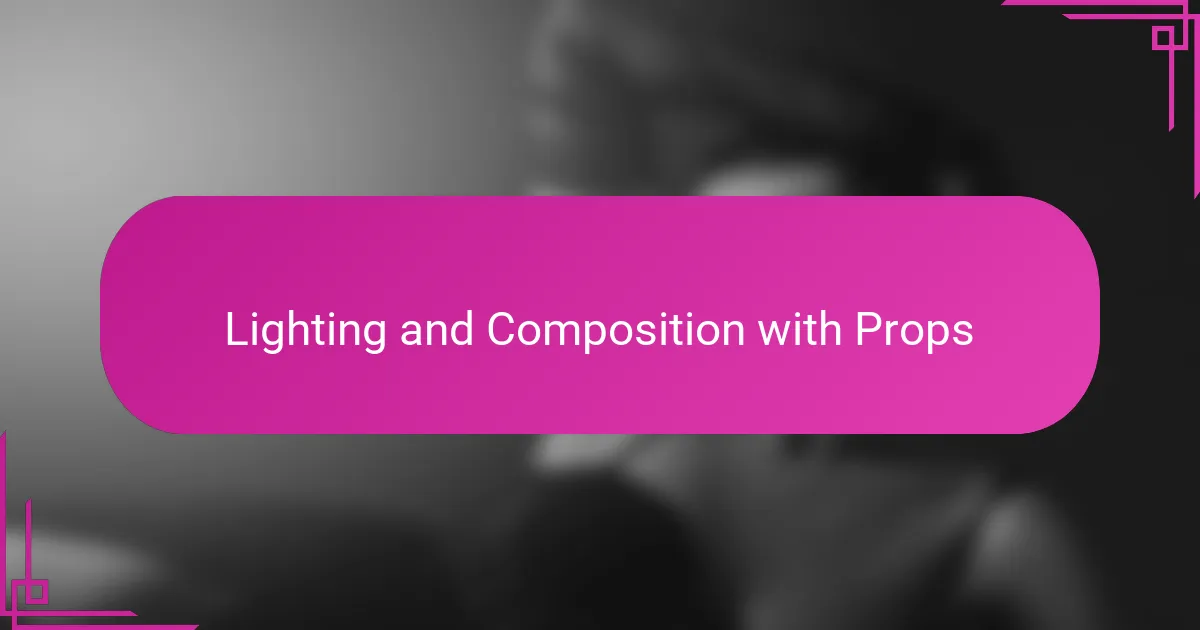
Lighting and Composition with Props
Lighting and composition go hand in hand when working with props in portrait photography. I remember a session where I struggled to highlight a cherished vintage scarf; it initially blended into the shadows, losing its significance. By adjusting the light to softly spill over the fabric, the prop’s texture and color came alive, adding a layer of intimacy to the portrait.
Have you noticed how the placement of a prop can either enhance or disrupt your composition? Early in my practice, I placed a hat too close to the edge of the frame, and it felt off-balance. Learning to position props so they create visual pathways rather than interruptions has made a huge difference in my work.
Sometimes, subtle shadows from props create depth and mood that photography needs. A simple branch casting a delicate shadow across a subject’s face once transformed a flat image into something evocative. Lighting isn’t just about illumination—it’s about storytelling through shadow and form.
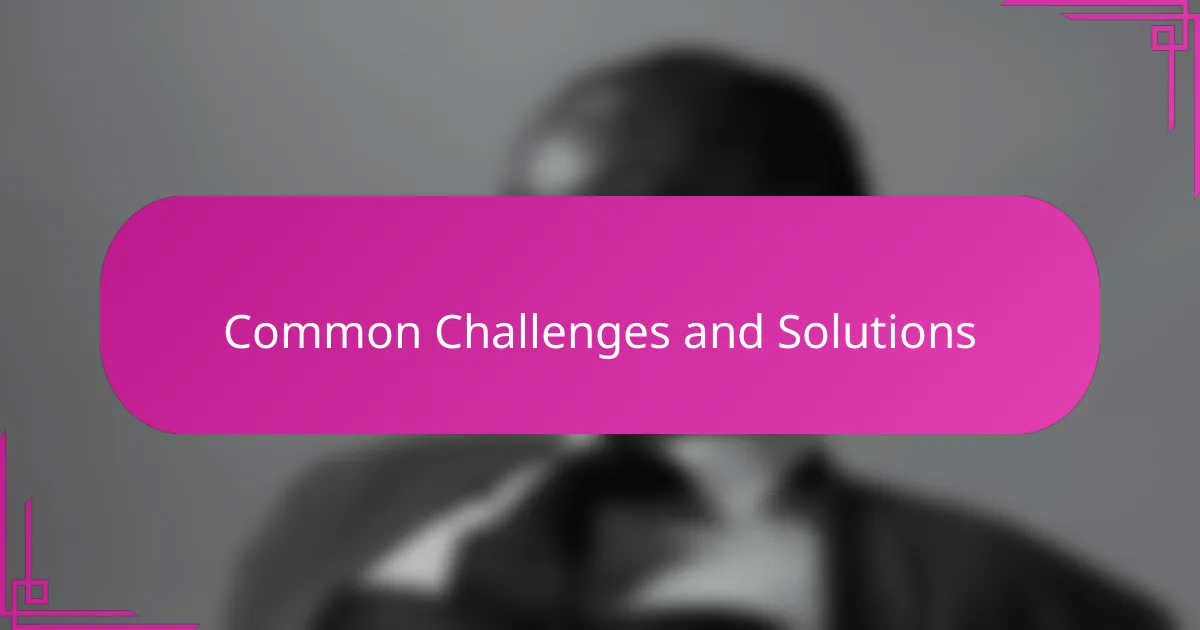
Common Challenges and Solutions
One challenge I often encountered was the tendency for props to overpower the subject. I remember a shoot where a bright, oversized umbrella grabbed all the attention, making the person almost disappear in the frame. To fix this, I scaled back the size and color intensity of the props, ensuring they supported rather than competed with the subject’s presence.
Another common hurdle is the awkward interaction between the subject and the prop. Early on, I noticed some clients struggled to look comfortable holding or sitting with certain items, which made the portraits feel staged. I began encouraging them to engage with props they personally connect with or introduced casual, natural gestures to ease the tension, creating a more relaxed atmosphere.
Have you ever faced the problem of props clashing with the overall scene or lighting? I certainly have. In one session, a shiny metallic object caused unwanted reflections, distracting from the mood I wanted to set. Adjusting angles and softening the light helped me tame those reflections, proving that sometimes small tweaks can solve big visual conflicts.
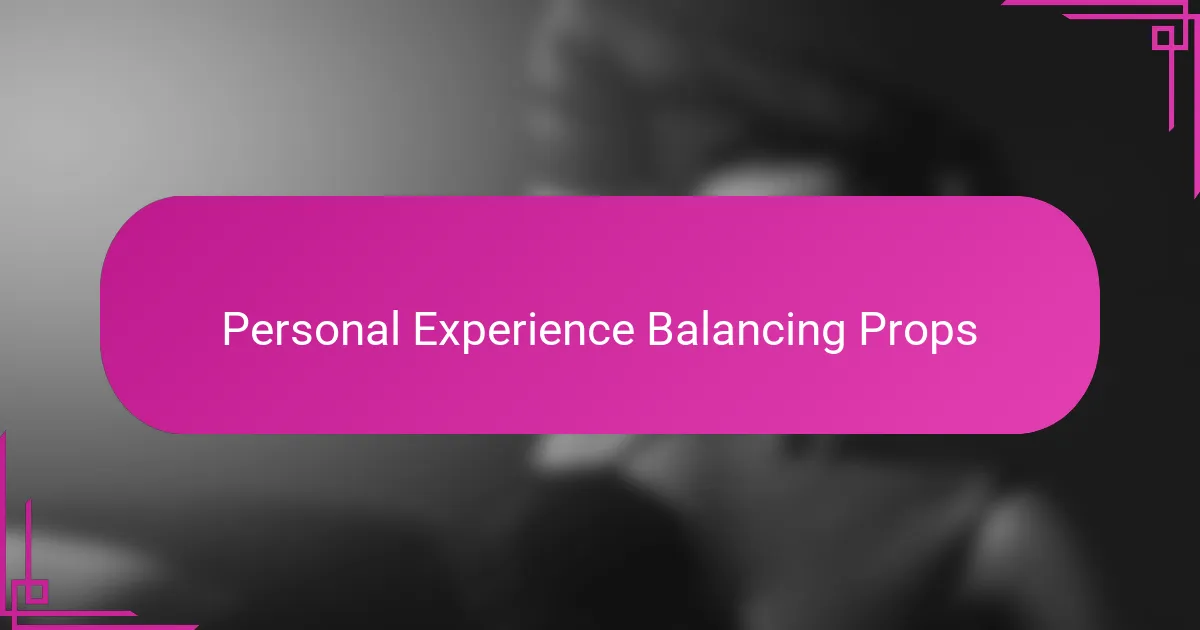
Personal Experience Balancing Props
Balancing props in portrait photography has always felt like a delicate dance to me. I recall one shoot where I struggled to decide how many items to include; too many props made the image chaotic, but too few left it feeling bare. Have you ever found yourself wondering where to draw that line? I learned that focusing on one or two meaningful props often brings harmony without overwhelming the frame.
I also remember a session with a client who brought several personal belongings, each telling a part of her story. At first, I tried to fit them all in, but it felt cluttered and confusing. So, I carefully chose the props that best represented her—and suddenly, the portraits breathed with clarity and honesty. Isn’t it fascinating how less can sometimes communicate more?
Sometimes the balance comes down to intuitive adjustments in the moment. I’ve shifted a hat slightly or repositioned a book just an inch to achieve that perfect visual weight. These small changes might seem minor, but from experience, they transform a good portrait into a captivating one. Have you experienced those subtle tweaks that quietly but powerfully change a photo’s mood?

Tips for Enhancing Portraits with Props
When I think about enhancing portraits with props, one tip I always come back to is letting the prop serve the story, not steal it. Have you ever noticed that a carefully chosen prop can spark a connection between the viewer and the subject? From my experience, using something meaningful—like a favorite hat or a well-loved book—adds layers without distraction, making portraits feel authentic rather than staged.
Another technique that’s worked well for me is being mindful of scale and placement. I once used a colorful scarf that initially overwhelmed the image, but by shifting it so it peeked subtly over the shoulder, it created a soft frame that drew attention to the face. Small adjustments like this, where the prop complements composition instead of competing with it, have a huge impact on the portrait’s overall balance.
Finally, I’ve learned to encourage natural interaction with props. Early on, some subjects seemed stiff or unsure what to do with items in their hands. Inviting them to engage casually—perhaps flipping through pages or resting a hand lightly on a chair—transformed the atmosphere. Have you found that when subjects connect genuinely with props, their expressions and body language breathe life into the entire portrait?